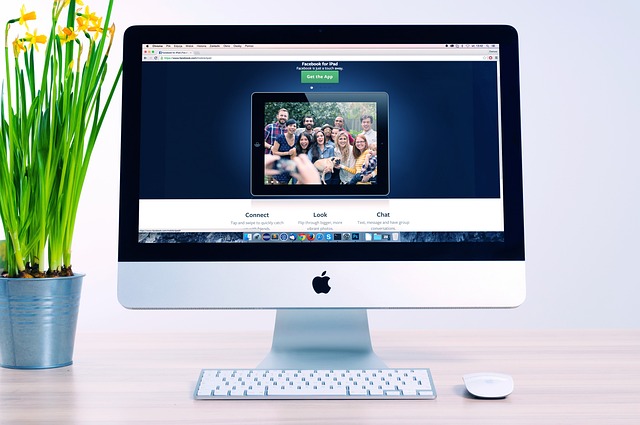Who is driving the boom behind food delivery apps? Has the role of software development in the food industry been critically received? How have some companies leveraged technology to alter the landscape of food delivery? These are some of the pressing questions the modern technological and gastronomical world has been grappling with.
There’s a growing concern in the USA over the imbalance in the food delivery sector. According to the U.S. Chamber of Commerce (2021), smaller, local businesses often lack the resources to maintain a viable online presence, impacting their survival amidst growing online competition. The Atlantic (2021) confirms this, stating that many restaurants are struggling against the domination of a few industry giants. A plausible proposal here to resolve this situation would be to use software development as a tool to level the playing field, allowing equal opportunities for local businesses to flourish.
In this article, you will learn about the bedrock of companies that have been kindling the upsurge in food delivery applications. Being a perspective player in this arena entails much more than simply writing engaging code; it requires a keen understanding of user behavior, market dynamics, and the capacity to employ incoming data to make informed decisions.
We shall also delve into the proposed solution for the aforementioned problems – using software development to empower smaller businesses in the food delivery sector. By examining real-world case studies, we will elucidate on the promising potential that software development holds for this burgeoning industry.

Key Definitions and Concepts in Software Development for Food Delivery Apps
Software Development: This involves the process of conceiving, designing, programming, testing, and fixing bugs in creating and maintaining apps, frameworks, or other software elements. In this context, it is the creation of mobile applications for food delivery services.
Food Delivery Apps: Popularly known as online food ordering platforms. These applications help customers to order food materials from various eateries and have them delivered to their doorstep.
Companies Fueling Food Delivery Boom: There are many tech companies around the world creating these food delivery apps, thereby contributing to an increase in the usage and popularity of these services.
Devouring the Phenomenon of Food Delivery Apps: How Major Players are Driving the Culinary Revolution
Major Players in the Food Delivery Market
The advent of technology and the direct result of digitization have given rise to several food delivery apps with a prevalence that is increasing day by day. The concept of food delivery apps is not new anymore; instead, it is revolutionizing the concept of food delivery itself. Some of the standout names exploiting software development to fuel the food delivery boom include Uber Eats, DoorDash, Grubhub, and Postmates. Moreover, conventional restaurants and fast-food giants alike, such as McDonald’s and Domino’s, are investing heavily in their software platforms to keep pace with this digital shift.
The major players mentioned have encapsulated technology’s dynamic power and deployed it effectively in their operations to stay competitive in this rapid boom. Sophisticated software development is key to these companies, with a consistent focus on user experience design, real-time tracking and geolocation technology, order management systems, payment gateways, and numerous more functionalities that enhance user experience and efficiency.
Components of Successful Food Delivery Software
In deploying state-of-the-art software development to grow the food delivery phenomenon, these companies have inherently possessed a consistent and striking characteristic. Their successful food delivery software comprises a few essential components.
- Their platforms offer an engaging user interface that appeals to customers.
- The software provides an effective ordering system, smoothly guiding the user from selecting meals, customizing orders, checking out, and processing payment.
- They exploit real-time tracking and geolocation technology for both users and delivery professionals. This technology enables users to track their food and provides accurate delivery time estimates.
- They also provide an efficient customer service and order management system to effectively address complaints or order inaccuracies.
- Facilitating multiple payment gateways is an additional crucial factor that provides convenience and flexibility to the users.
The booming food delivery phenomenon is not only due to the comfort and convenience it brings to customers’ fingertips, but it is also significantly credited to the technological prowess deployed in the background. Food delivery companies are forging ahead, capitalizing on the rising demand, driven by ongoing tech innovations and persistent software development. The food delivery sector has therefore become an excellent showcase of how technology can effectively revolutionize an entire industry.
Servicing the Hungry: The Ingenious Software behind Successful Food Delivery Companies
Driving Growth: The Rising Demand for Efficient Software in Food Delivery Apps
What makes today’s food delivery apps so effective and user-friendly, and who are the people behind these technological marvels? The key is within the sophisticated software that food delivery apps utilize, which optimizes and simplifies the process of ordering food. As the global food delivery sector continues to grow at an unprecedented rate, a correlating surge in the demand for advanced and fast food delivery platforms cannot be ignored. This necessity has inspired and propelled tech firms’ dedication to crafting cutting-edge software solutions tailored explicitly for food delivery services, thereby supporting the sector’s rapid growth trajectory.
Challenges & Bottlenecks: The Software Development Dilemma in Food Delivery
However, as much as the growth is prominent, it is also met with significant challenges. Developing tech applications for food delivery services can be a complex process, fraught with hurdles that dilute efficiency and productivity if not handled correctly. For instance, ensuring seamless integration with existing systems, perfecting user interface designs, guaranteeing secure payment gateway, harmonizing real-time tracking, and managing vast databases are some of the critical challenges developers face while designing software for food delivery apps. Additionally, the constant need to modify and upgrade software to keep up with evolving consumer tastes and emerging technologies further amplifies the difficulty.
A Glance at Excellence: Successes in Food Delivery Apps’ Software Development
On a cheerful note, several companies have managed to surmount these substantial obstacles. Companies like UberEats, DoorDash, and GrubHub are perfect examples of firms that have efficiently tweaked their technology to suit the ever-changing landscape. For instance, UberEats and DoorDash have upgraded their platforms to ensure seamless integration with various systems and significantly boost efficiency. They incorporate features like real-time GPS tracking, user-friendly and appealing interfaces, and secure payment gateways, closely listening to consumer feedback and continually tweaking their software accordingly. Meanwhile, GrubHub has focused extensively on having a stable and robust database which ensures maximum uptime and minimal user complaints. These companies have recognised the need for adaptability in this fast-paced industry and have thus developed their software with a keen eye on versatility and expandability, setting notable benchmarks for success in food delivery apps’ software development.
Peeling Back the Layers: Unmasking the Digital Framework that Fuels the Food Delivery Boom
Embracing the Tech-Driven Paradigm Shift
Is the traditional sit-down restaurant experience becoming irrelevant? The continuous rise of the food delivery business seems to suggest so. Indeed, the software development sector plays an integral role in this emerging trend. The made-to-order market’s evolution is fueled by advanced user-friendly applications that make ordering food as simple as clicking a button. It’s a revolutionary approach that goes beyond offering convenience and extends to a well-rounded dining journey that includes selection, customization, and feedback. This digital makeover of the food industry bespeaks a progressive shift in consumer behavior, and it drives home the point that technological prowess equates to business success.
Addressing the Elephant in the Room
Despite the impressive strides, there is a not-so-subtle glitch that mars the picture-perfect scenario — the infamous ‘app-fatigue.’ The multitude of apps vying for consumer attention, no matter how well-developed, has led to discrepant engagements and a confusing surge of options. The consumer, the ultimate kingpin, often finds themselves lost amid endless choices and cluttered interfaces. The lack of seamless integration and unified interfaces mirror a pressing snag in an otherwise flourishing industry. This misalignment has the potential to derail the entire user-experience thereby taking sheen off an otherwise promising offering.
Evolving Beyond the Conventional: Model Examples
Certain businesses have adopted exemplary strategies to negotiate this crippling challenge. Take Domino’s Pizza, for instance. The company recognized the conspicuous ‘app-fatigue’ trend and cranked up its software development to provide a consolidated, all-encompassing experience. It introduced ‘Domino’s AnyWare,’ a collection of new ways to order, including via Smart TV, Google Home, Amazon Echo, Facebook Messenger, and more, all centralized via a single application. Another notable strategy is the one adopted by Just Eat. The company enhanced its app with a chatbot that helps customers with their orders, right from personalizing their meals to checking out.
On the other hand, Uber Eats, instead of inundating its primary app with additionals, launched a standalone application to cater exclusively to its food-delivery services. So, while one company prefaced integration, the others focused on differentiation. Both strategies, however, delivered a common result – simplification. It showcases that no matter what route you choose, staying keenly aware of customer expectations, and constantly adapting your software development strategies to meet those expectations, are the keys to not just surviving, but thriving in the dynamic food delivery market.
Conclusion
Have you ever considered how technology continues to innovate the cuisine industry, particularly in the context of food delivery applications? Through the exponential growth of such platforms, dining has been redefined for the tech-savvy, convenience-oriented consumer. Notable corporations have played pivotal roles in this transformation, revolutionizing the food delivery scene through software development, thus fueling the current delivery service boom. This digital disruption of traditional restaurant and take-out experiences has been a major contributing factor to the ongoing culinary evolution.
We hope that our readers have been inspired by our exploration into this dynamic area of technology and how it is rejuvenating the face of food delivery services. As you continue to enjoy the convenience and ease of your favorite delivery apps, remember that there is an entire world of developers, innovators, and technologists behind every screen. We invite you to remain engaged with our blog, as we delve deeper into the technological advancements shaping our world and our lives in ways we often overlook.
Finally, we would like to thank you for your continued support and readership. Exciting things are on the horizon for our blog, as we will be examining other high impact industries in the coming weeks. We are thrilled to be on this journey of exploration and discovery together with you, feeding both curiosity and knowledge. And though we won’t be delivering piping hot pizzas to your doorstep, we promise to deliver steaming hot insights and thought-provoking content. Stay tuned for our future posts and partake in our exploration of this fascinating tech-driven world.
F.A.Q.
1. What are the essential features of a food delivery app?
The key features of a food delivery app should include easy navigation for food selection, real-time tracking of orders, and multiple payment methods. They should also have features like offers and discounts, user-friendly interface, and ratings and reviews system.
2. How do companies fuel the food delivery boom?
Companies fuel the food delivery boom by investing in robust app development technologies to bolster the efficiency and user experience. They also team up with various local restaurants and use aggressive marketing strategies to acquire customers.
3. What is the role of software development in this booming industry?
Software development plays a pivotal role in the food delivery industry as it helps create seamless communication between the customer, restaurant, and the delivery executive. It allows the orchestration of orders, route optimization, real-time tracking, and on-time delivery, directly impacting customer satisfaction.
4. How are payment systems integrated into food delivery apps?
Payment systems are integrated into food delivery apps using payment gateway APIs that link the user’s banking system or digital wallet directly to the app. This allows users to make transactions easily, securely, and without the need for physical money exchange.
5. How does software development enhance user experience in food delivery apps?
Software development enhances the user experience in food delivery apps by continuously updating the user interface for better navigation, optimizing app performance for faster loading time, and enhancing features like real-time tracking and customer support. This provides users with a comprehensive, seamless, and intuitive experience.


